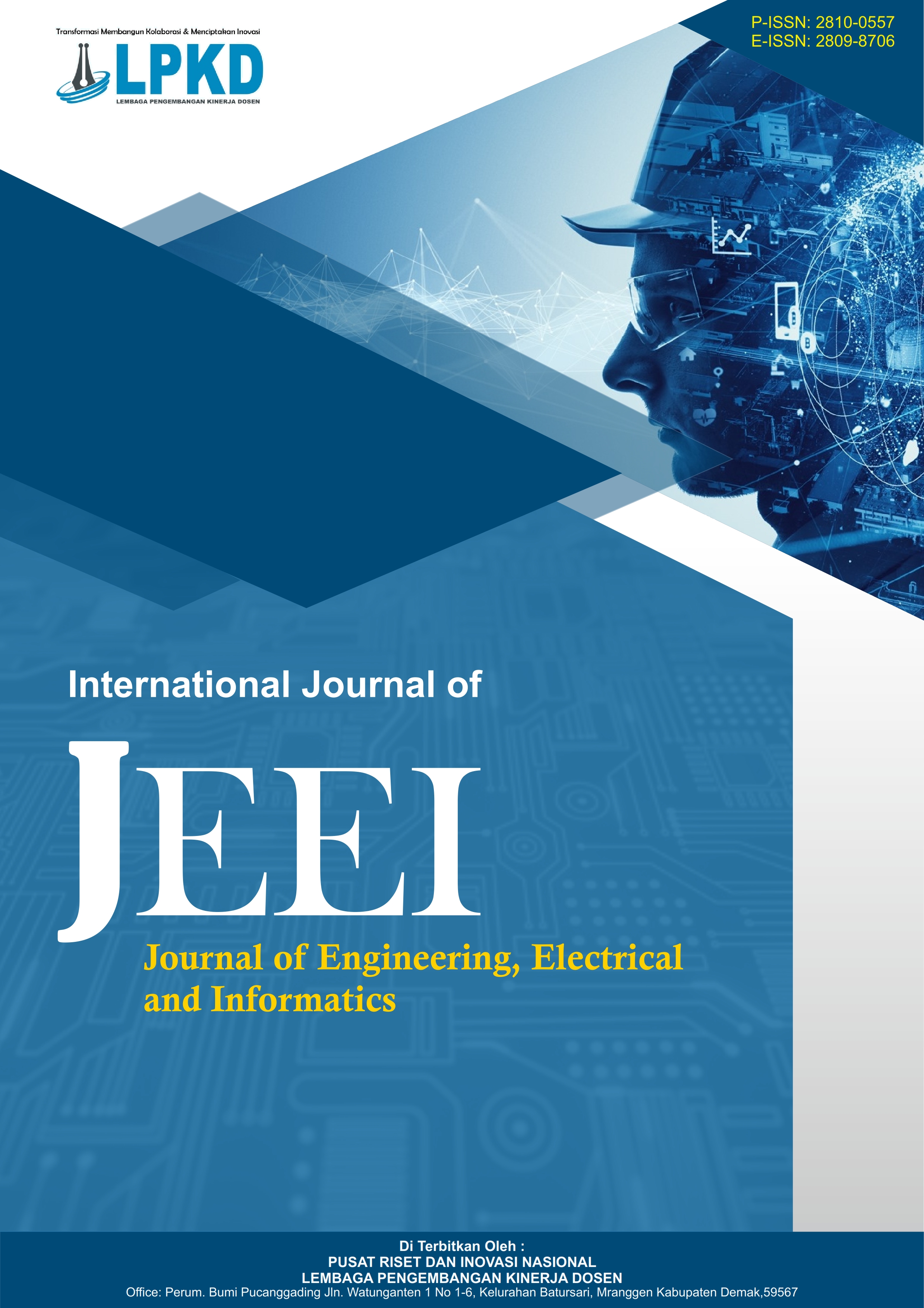Flexural Behavior Analysis of Geopolymer Reinforced Concrete Beams Using Finite Element Method
DOI:
https://doi.org/10.55606/jeei.v5i2.4864Keywords:
ANSYS, experimental validation, finite element method, flexural behavior, geopolymer concrete, numerical simulation, reinforced concrete beamAbstract
This study aims to analyze and validate the flexural behavior of reinforced geopolymer concrete beams compared to conventional concrete using a numerical approach through the Finite Element Method (FEM) with ANSYS software. The simulations were based on geometric and material parameters from previous experimental studies, including those by Abraham et al. (2013), Dattatreya et al. (2011), and Ojha et al. (2022). The simulation results indicate that the load–deflection behavior, crack distribution patterns, and flexural capacity of geopolymer concrete beams are comparable to those of conventional concrete beams. Validation against experimental data shows small deviations in both ultimate load and maximum deflection, confirming the accuracy of the numerical model. Crack propagation in the flexural zone also demonstrates similar characteristics, suggesting that geopolymer concrete is a viable alternative structural material. This research contributes to the development of numerical modeling to support the implementation of geopolymer concrete in sustainable construction.
References
R. M. Andrew, “Global CO 2 emissions from cement production,” Earth Syst. Sci. Data, vol. 10, no. 1, hlm. 195–217, 2018.
M. D. Sumajouw, P. Christian, dan S. O. Dapas, Elemen Struktur Beton Bertulang Geopolymer. Andi, 2013.
E. G. Nawy, T. Surjaman, dan B. Suryoatmono, Beton Bertulang: suatu pendekatan dasar. PT. Eresco, Bandung, 1990.
D. Tjitradi, E. Eliatun, dan S. Taufik, “3D ANSYS numerical modeling of reinforced concrete beam behavior under different collapsed mechanisms,” Int. J. Mech. Appl., hlm. 14–23, 2017.
A. İ. Çelik, A. Özbayrak, A. Şener, dan M. C. Acar, “Numerical analysis of flexural and shear behaviors of geopolymer concrete beams,” J. Sustain. Constr. Mater. Technol., vol. 7, no. 2, Art. no. 2, Jun 2022, doi: 10.47481/jscmt.1116561.
Y. N. Wibowo, B. Piscesa, dan Y. Tajunnisa, “Numerical Investigation of Geopolymer Reinforced Concrete Beams Under Flexural Loading Using 3Dnlfea,” J. Civ. Eng., vol. 37, no. 1, hlm. 27–32, 2022.
M. N. Hakrah, “STUDI PERILAKU PERKUATAN BALOK BETON BERTULANG DENGAN MORTAR GEOPOLIMER DAN MATERIAL GROUTING,” other, Universitas Hasanuddin, 2023. Diakses: 6 Juli 2025. [Daring]. Tersedia pada: https://repository.unhas.ac.id/id/eprint/27194/
“Pengaruh Lubang terhadap Penulangan pada Balok Beton... - Google Scholar.” Diakses: 6 Juli 2025. [Daring]. Tersedia pada: https://scholar.google.com/scholar?hl=en&as_sdt=0%2C5&q=Pengaruh+Lubang+terhadap+Penulangan+pada+Balok+Beton+Bertulang+berdasarkan+SNI+2847%3A2013&btnG=
R. Abraham, S. Raj, dan V. Abraham, “Strength and behaviour of geopolymer concrete beams,” Int. J. Innov. Res. Sci. Eng. Technol., vol. 2, no. 1, hlm. 159–166, 2013.
“Flexural behavior of reinforced geopolymer concrete beams.” Diakses: 6 Juli 2025. [Daring]. Tersedia pada: https://ieeexplore.ieee.org/abstract/document/7755347
P. N. Ojha, B. Singh, A. Trivedi, P. Singh, A. Singh, dan C. Pede, “Short-term mechanical performance and flexural behavior of reinforced slag-fly ash-based geopolymer concrete beams in comparison to OPC-based concrete beams,” J. Res. Eng. Struct. Mater., vol. 9, no. 1, hlm. 31–51, 2023.



.png)
.png)


